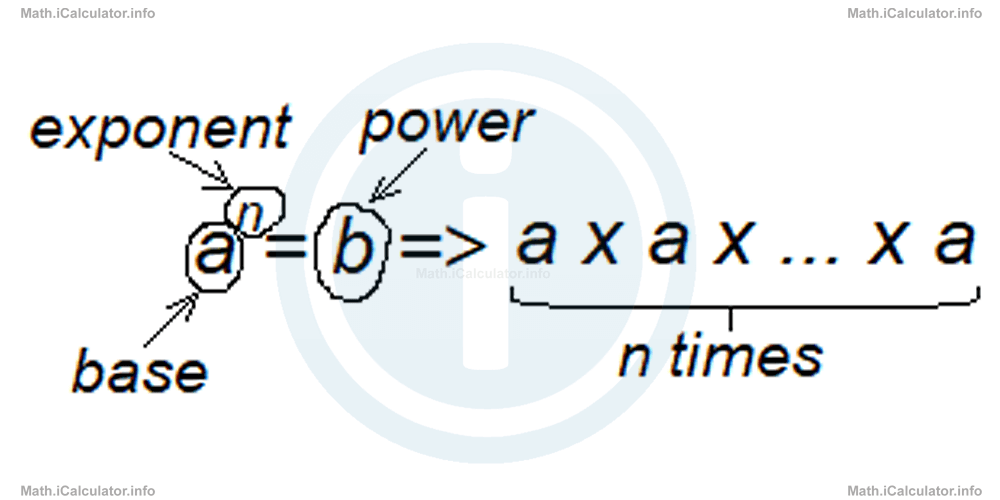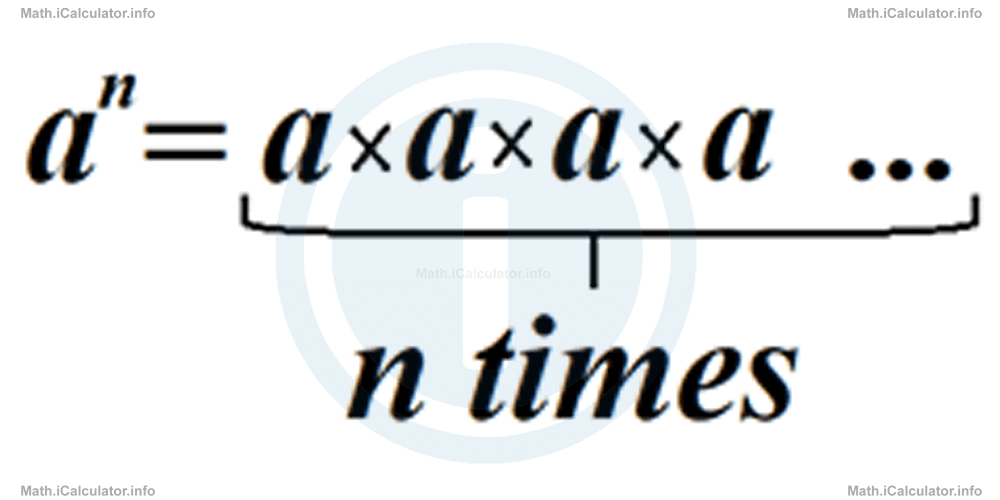Menu
Math Lesson 7.1.1 - Powers, Indices, and Exponents
Please provide a rating, it takes seconds and helps us to keep this resource free for all to use
Welcome to our Math lesson on Powers, Indices, and Exponents, this is the first lesson of our suite of math lessons covering the topic of Indices, you can find links to the other lessons within this tutorial and access additional Math learning resources below this lesson.
Powers, Indices, and Exponents
In previous tutorials, we have provided a general description of powers and exponents. Let's recall what we have said about powers in tutorial 1.3.
❝
If we have to multiply the same factor several times by itself, we use a shorter notation known as "power" to represent such a recurring multiplication by the same number. In other words, the power of a number says how many times to use that number in a multiplication.For example, instead of writing 5 × 5 × 5, we can write 53 which reads "5 at power 3".
In general,
The recurring factor is called the base, the number that shows how many times this factor appears in a recurring multiplication is called the exponent and the result of this operation is called power. Therefore, the popular terminology used to express this operation is not 100% correct. Thus, in the expression 53 = 125, we should have said "the power of 5 with exponent 3 is 125" instead of "5 raised in power 3 gives 125". However, we are now familiar with the second way of expression and nobody complains about that.
❞
Thus, the schematic representation of power is as below:

Another name used for the exponent is index (indices in plural). Thus, for example, in the operation
the base is 3, the exponent (or index) is 4, and the power is 81.
Example 1
Write the following expressions more shortly and calculate the result if possible.
- 2 × 2 × 2 × 2 × 3 × 3
- m × m × m × n × n × n × n × n
Solution 1
- We have four '2's and '3's in this expression. Thus, 2 × 2 × 2 × 2 × 3 × 3
= 24 × 32
= 16 × 9
= 144 - We have three 'm's and five 'n's in this expression. Thus, m × m × m × n × n × n × n × n
= m3 × n5
More Indices Lessons and Learning Resources
Whats next?
Enjoy the "Powers, Indices, and Exponents" math lesson? People who liked the "Indices lesson found the following resources useful:
- Power Feedback. Helps other - Leave a rating for this power (see below)
- Powers and Roots Math tutorial: Indices. Read the Indices math tutorial and build your math knowledge of Powers and Roots
- Powers and Roots Video tutorial: Indices. Watch or listen to the Indices video tutorial, a useful way to help you revise when travelling to and from school/college
- Powers and Roots Revision Notes: Indices. Print the notes so you can revise the key points covered in the math tutorial for Indices
- Powers and Roots Practice Questions: Indices. Test and improve your knowledge of Indices with example questins and answers
- Check your calculations for Powers and Roots questions with our excellent Powers and Roots calculators which contain full equations and calculations clearly displayed line by line. See the Powers and Roots Calculators by iCalculator™ below.
- Continuing learning powers and roots - read our next math tutorial: Roots
Help others Learning Math just like you
Please provide a rating, it takes seconds and helps us to keep this resource free for all to use
We hope you found this Math tutorial "Indices" useful. If you did it would be great if you could spare the time to rate this math tutorial (simply click on the number of stars that match your assessment of this math learning aide) and/or share on social media, this helps us identify popular tutorials and calculators and expand our free learning resources to support our users around the world have free access to expand their knowledge of math and other disciplines.
